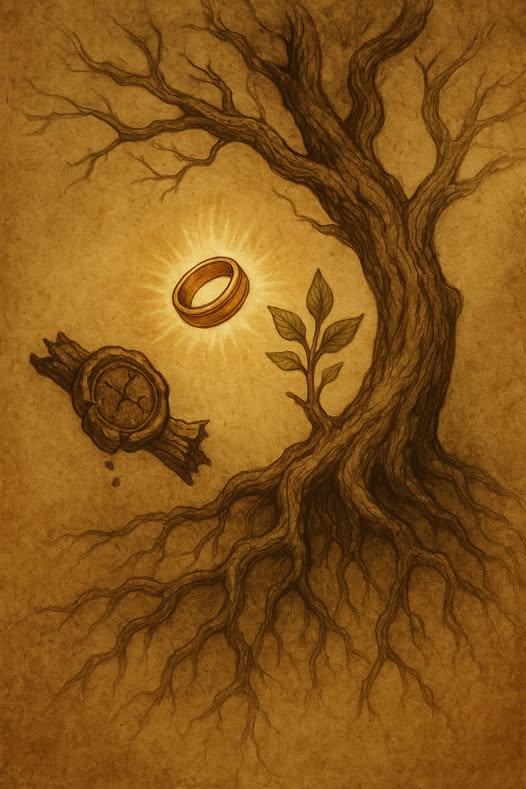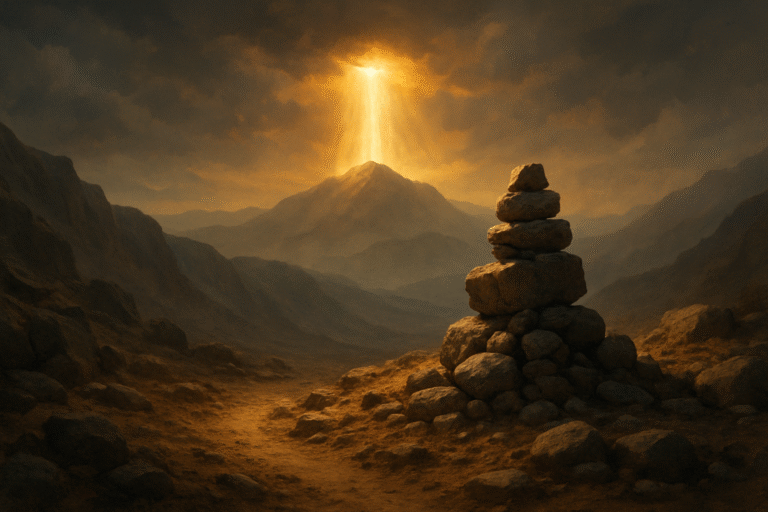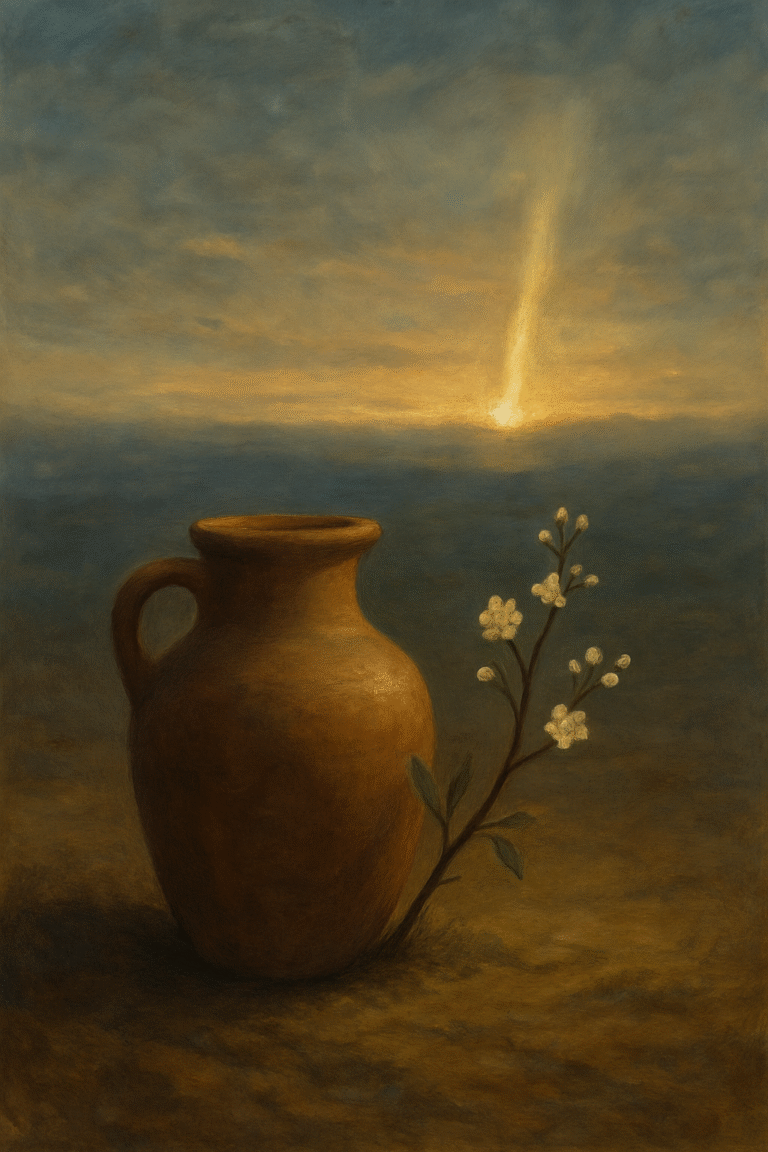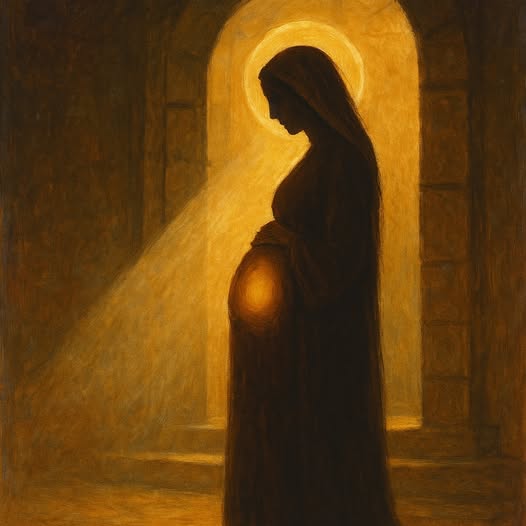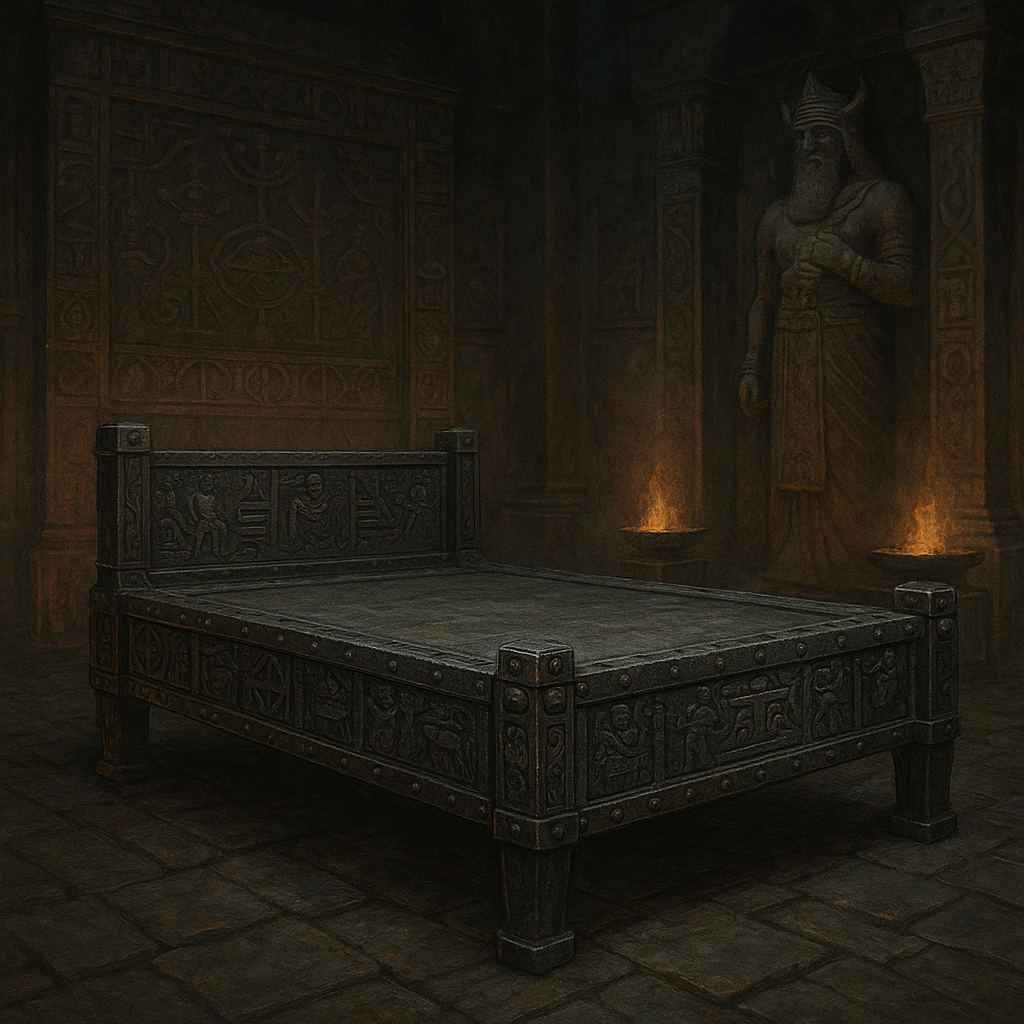
The ceremonial bed of Og, last of the Rephaim and king of Bashan.
Deuteronomy 3:11 gives a tantalizing detail about King Og of Bashan:
“For only Og king of Bashan was left of the remnant of the Rephaim. Behold, his bed was a bed of iron. Is it not in Rabbah of the Ammonites? Nine cubits was its length and four cubits its breadth, by the standard cubit.”
At face value, this verse is often taken to mean Og was a literal giant over thirteen feet tall. But that interpretation overlooks the ancient Near Eastern religious context and the theological message behind the verse. Og’s “bed” was not a piece of personal furniture. It was a ritual object, a ceremonial marriage bed likely tied to the worship of Marduk, and part of a system designed to reenact the rebellion of Genesis 6, the ritual creation of Nephilim.
Og’s kingship in Bashan was not just political. It represented the continuation of a corrupted spiritual tradition that began before the Flood, a system rooted in divine rebellion, ritual sex, and the ambition to revive the forbidden hybrid bloodline. His bed symbolized this legacy and his role in sustaining it.
The Rephaim and Their Nephilim Heritage
Og is described as the last of the Rephaim, a group of ancient warrior-kings associated with the pre-Israelite peoples of Canaan. In biblical and Ugaritic literature, the Rephaim are depicted as powerful figures, sometimes as giants, sometimes as the spirits of dead rulers. They are linked with the Nephilim of Genesis 6, who were born when the sons of God (bene elohim) took human women as wives.
The Nephilim were not divine beings in their own right, but they were part divine—unnatural hybrids of rebellious elohim and mortal women. This cross-species corruption made them uniquely powerful and profoundly dangerous. According to the Book of Enoch, they filled the earth with violence, perverted knowledge, and defiled creation. When they were killed in the Flood, their spirits became disembodied and were cursed to wander the earth. These restless spirits became what Second Temple literature and later Christian theology identified as demons, malevolent beings opposed to both God and humanity.
Og, as a descendant of the Rephaim, did not result from one of these original divine-human unions. Instead, he stood within a system that sought to perpetuate the Nephilim legacy through ritual imitation of the original rebellion.
Og’s Bed: A Marriage Bed of Marduk
Og’s bed was enormous, nine by four cubits (about 13.5 by 6 feet), and made of iron. It was not located in his palace but in Rabbah of the Ammonites, suggesting it was preserved as a cultic relic or war trophy. Its size and composition mark it as ceremonial.
In ancient Mesopotamia, sacred beds were used in rituals known as hieros gamos, the sacred marriage, where kings ritually united with temple priestesses in ceremonies that symbolized the union of a god and goddess. In Amorite theology, this often involved Marduk, the high god associated with order and kingship. The king, acting as the god’s representative or possessed by his spirit, would participate in these rites to affirm his rule and draw divine power into the land.
These were not benign fertility rituals. They were reenactments of the transgression described in Genesis 6. Though the original divine beings could no longer take human wives, human kings offered themselves as hosts for these rebellious spirits. By imitating the Genesis 6 pattern through ritual sex, they sought to produce new Nephilim—offspring touched by the same spiritual corruption, even if no longer biologically half-divine.
Post-Flood Nephilim: Diminished but Defiant
After the Flood, the direct offspring of the sons of God were gone, and the Watchers themselves were imprisoned. But the cultic systems they established endured. Their disembodied offspring, the demons, continued to seek influence through human vessels.
Kings like Og performed rituals meant to reestablish contact with these spirits. They offered themselves as channels, seeking to infuse their lineages with the power and terror of the old Nephilim. Though the results were not true hybrids, they were viewed as spiritually tainted, giant-like figures, the Rephaim, the Anakim, and other clans described as giants in the land of Canaan.
The post-Flood Nephilim were less divine, but were still dangerous. Their creation came through ritual and possession rather than biology, but their purpose remained the same, to stand against Yahweh’s plan and to claim the land as offspring of rival gods.
Og as a Living Monument to the Rebellion
Og was not merely a large or powerful man. He was the final symbol of a rebellion that had its roots before the Flood. His iron bed was a throne of ritualized defilement. As king of Bashan, a region filled with high places and cult centers, Og stood as a high priest of a forbidden legacy. His reign was a continuation of the old defiance, and his rituals served to maintain spiritual opposition to Israel and its God.
His defeat at the hands of Moses and the Israelites was more than a military conquest. It was a theological confrontation between the covenant people of Yahweh and the last representative of an ancient demonic program. When Og fell, so did the last ceremonial link to the pre-Flood Nephilim agenda.
Conclusion
Og’s iron bed was never about his physical stature. It was a ceremonial platform for sacred marriage rituals, part of a larger spiritual rebellion meant to resurrect the Nephilim legacy in a diminished but still defiant form. Through ritual sex, demonic possession, and corrupted kingship, Og and others like him tried to restore what God had condemned.
The biblical detail about Og’s bed was preserved not to impress readers with his size but to expose the emptiness of his claim to divine power. His ceremonial bed, like the cult it served, was ultimately powerless. It was not a measure of greatness, but a relic of rebellion, and a warning that no throne built on defiance of God will endure.
Discussion Questions
- Why does the Bible preserve the detail about Og’s bed, and how does understanding its ritual function change our interpretation of Deuteronomy 3:11?
- How does the post-Flood method of producing Nephilim through ritual possession reflect a continuation of the Genesis 6 rebellion?
- In what ways does the defeat of Og represent more than a military victory in the biblical narrative?
- How does the Second Temple understanding of the Nephilim as the origin of demons influence our reading of demonic activity in the New Testament?
- What does the preservation of cultic artifacts like Og’s bed in enemy cities suggest about the lasting influence of spiritual rebellion in the ancient world?
Want to Know More?
- Michael S. Heiser, Reversing Hermon: Enoch, the Watchers, and the Forgotten Mission of Jesus Christ (2017)
This book focuses on the Genesis 6 rebellion of the Watchers and its theological impact. Heiser explains how the early Jewish understanding of this event shaped key New Testament passages and how the sin of the Watchers was directly tied to the origin of the Nephilim. It also connects these ideas to Christ’s mission of cosmic reversal, making it an essential foundation for understanding the spiritual backdrop to Og’s role.
- 1 Enoch (especially chapters 6–16)
A central Second Temple Jewish text that expands the Genesis 6 account. It describes how divine beings (the Watchers) descended, took human women, and produced the Nephilim. After the Flood, the Nephilim’s spirits became demons—roaming the earth without rest. These chapters are vital for understanding the theological claim that the Nephilim were part-divine hybrids and that their continued influence came through spiritual possession and cultic practice.
- K. Lawson Younger Jr., Ancient Near Eastern Conquest Accounts: A Study in Ancient Near Eastern and Biblical History Writing (1990)
This academic work provides cultural context for how kingship, divine authority, and warfare were expressed in the ancient Near East. It supports the view that kings like Og were not merely political figures but cultic agents, claiming divine power through symbolism, conquest, and ritual.
- Michael S. Heiser, The Unseen Realm: Recovering the Supernatural Worldview of the Bible (2015)
A groundbreaking study that brings together biblical and ancient Near Eastern material to explain the worldview of the biblical authors. Heiser examines the divine council, the nature of elohim, the role of the Watchers, and how cosmic rebellion shaped biblical theology. It offers clear support for the idea that post-Flood attempts to replicate the Nephilim were part of an ongoing spiritual war.
- John H. Walton, Ancient Near Eastern Thought and the Old Testament: Introducing the Conceptual World of the Hebrew Bible (2006)
Walton’s work helps bridge modern readers into the worldview of the Old Testament. He explains sacred space, divine kingship, and ritual language in the ANE, making it easier to understand how a ceremonial bed—such as Og’s—would have symbolized a king’s divine role and connection to spiritual beings.
- Amar Annus, “On the Origin of Watchers: A Comparative Study of the Antediluvian Wisdom in Mesopotamian and Jewish Traditions.”
Published in Journal for the Study of the Pseudepigrapha 19.4 (2010): 277–320.
This article offers the most comprehensive comparison between the Mesopotamian Apkallu and the biblical Watchers. Annus traces the transformation from fully divine pre-Flood sages to degraded, post-Flood hybrids. His analysis demonstrates how the biblical portrayal of the Watchers as corrupting figures parallels Mesopotamian traditions that show a decline in the divinity and legitimacy of the Apkallu after the flood. This forms a key piece of evidence for understanding the diminishing power and status of Nephilim-like figures in later periods.

